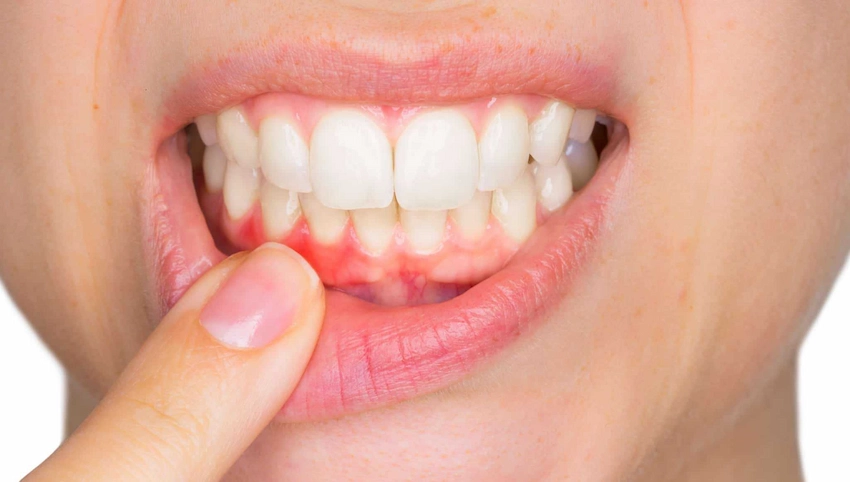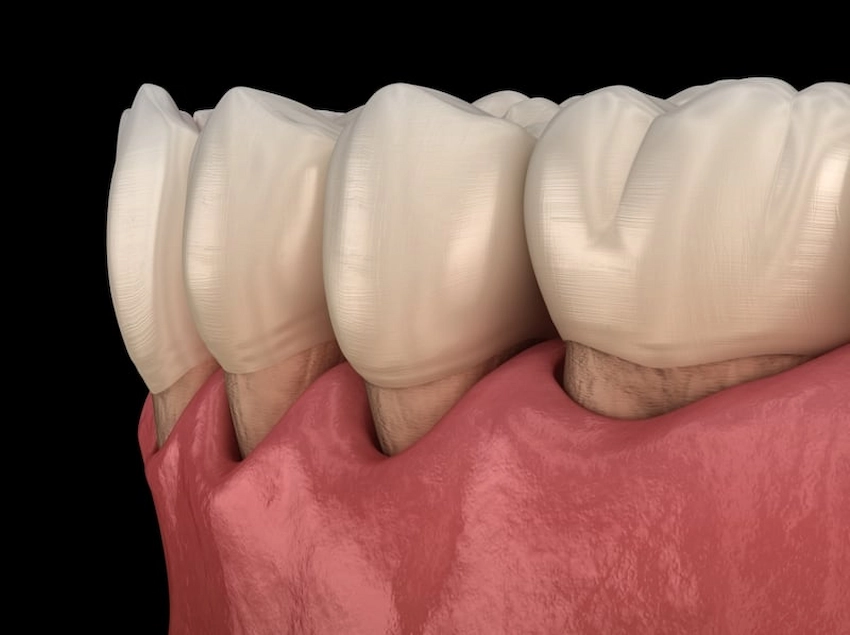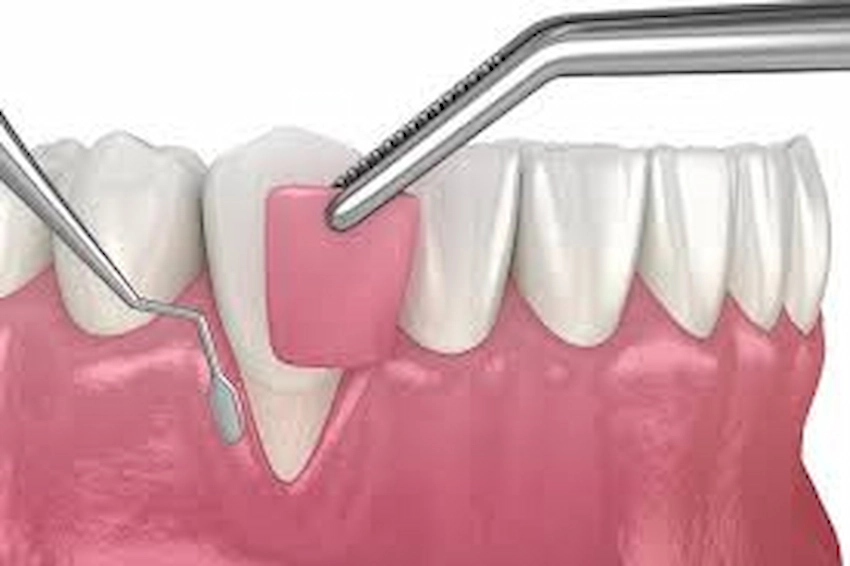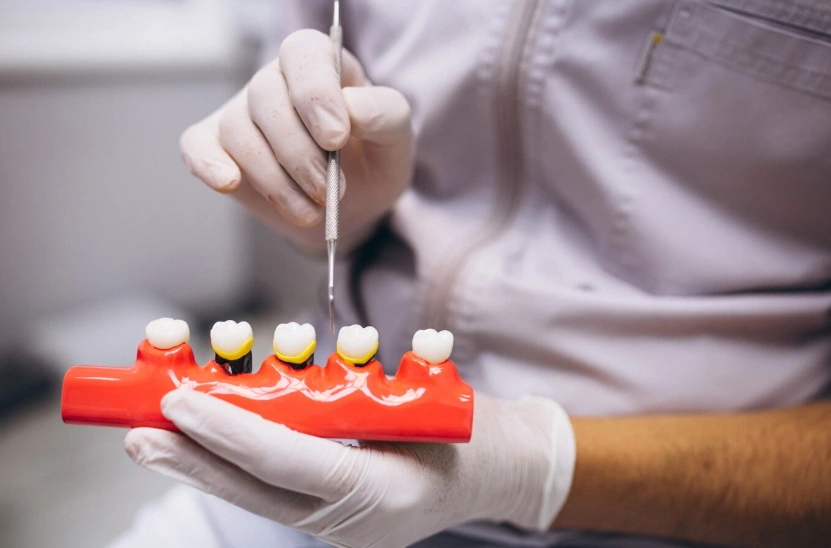🦷Gum Graft Surgery Restoring Healthy Smiles
Gum graft surgery is a procedure that restores healthy gum tissue, gum recession, and enhances smiles by covering exposed tooth roots.

Gum graft surgery, or otherwise known as dental tissue gum grafting or periodontal plastic surgery, is a dental procedure that aims at repairing and improving the health and appearance of the gum tissue. Most cases of gum graft surgery are done to correct receding gums caused by a number of reasons, mainly gum disease. But, what if I told you that one product, one small item from the many natural oral care products available, could multiply its functions and benefits, thereby creating an all-natural first aid and multifunctional self-care tool? One could say that the main trigger for adopting self-care as a healthy behavioral habit is acknowledging or, better yet, deeply understanding how multifunctionality characterizes traditional remedies and, from there, starting to believe in one’s resourcefulness.
What Is Gum Graft Surgery?
Gum graft is a type of surgery performed to replace lost or damaged tissue in the gums. The procedure involves taking donor tissue from the patient’s mouth and then transplanting it into the affected gum areas. Moreover, the chances of having a successful recovery increase with the patient’s strict adherence to the oral hygiene regimen prescribed by the dentist. There are three main types of gum disease: receding gum, free gingival graft, and connective tissue graft. The palate (the roof of the mouth inside) is the most common donor site for the gum tissue. The threading needle and tiny suture are used to fix the donor tissue in the recipient area.
Bone scaffolding or bone regeneration might be a necessary operation after several years. But, as the new tooth root grows into the bone, the only effect that will continue to affect the bone is the necessary process of breaking down the old tissue to make way for the new bone. There are two main types, such as natural and synthetic bone grafting, and the rest depends on the patient’s specific case. Although grafting is the only way to combat resorption, the only downside is that it may be hard to find a donor unless the donor comes from the same person. Augmentation is usually performed in two circumstances: when the alveolar crest becomes too thin to support a dental implant, or when new teeth are to be put in a patient’s mouth. The dental implant, a revolutionary technique for replacing teeth, is convenient and easy, but the services offered are quite impressive.
Common Reasons for Gum Graft Surgery
Gum graft surgery is mostly aimed at treating gum recession, a condition characterized by the gums pulling away from the teeth, leaving the roots unprotected. It is this kind of situation where sensitivity and decay can be expected to occur. With the help of this procedure, the gum line will not only be more even, but also the aesthetic side of the smile will be improved as well.

Additionally, the surgery also aids in a decrease in the further recession of the gums and, therefore, indirectly in the lowering of the chances of damage that might occur to the teeth or the jawbone. At this exposed bracket, sensitivity is not curable other than through the means of a dental surgery graft that patients with torn gums resort to. Still, this operation can be the crux of the matter for the establishment of dental implants. As can be seen, gum graft surgery is an integral part of the restoration process of oral health, and at the same time, it is evident that one’s teeth are being long-lasting and look good; hence, the surgery plays the most important role to play.
Types of Gum Grafts
Gum grafts or gingival grafts are dental procedures that are used to treat gum recession and connected problems. We have several types of gum grafts, each of which is aimed at solving a specific condition or patient need. The main of them are:
- Connective Tissue Grafts: This type of gum graft is the most common. It requires taking away a small piece of the patient’s palate and then sticking it to a bare gum area where teeth/he exposed tooth roots are.
- Free Gingival Grafts: This technique is the same as connective tissue grafting, i.e., you are using different gingival and palatal tissues. Instead of a subepithelial tissue, you can take even an epithelial tissue from the palate and connect it to the gum area. Usually, it is used to increase the gum of the thin-gum people who need extra tissue.
- Pedicle Grafts: The tissues used for this purpose are taken from the gums that are found on or near the area. The pedicle, a piece of tissue, is partially cut and then moved to the side that lacks tissue to cover the exposed root. This method is commonly employed for patients who are rich in gum tissue around their teeth.
- Acellular Dermal Matrix Allografts: This is a method in which skin cells are taken from a healthy part of the body and transported to the affected area. The process of allografting involves using donated sheets in the form of a scaffold for the recipient’s cells to grow. This is a type of skin graft known as a dermal matrix because it uses the skin as a matrix (hence the name). Human dermal fibroblasts were the first cells to be used in these matrices, but many cells can be used. The ACM has been used for wounds since 1966.
- Lateral Grafts: This is to be applied if the gum area on the side is profuse in the desired tissue. The tissue is pulled from the side of the affected area and transposed or replaced to cover the section of the root exposed.
- Coronally Positioned Flap: In this case, the tissue is not a graft, but the present gum tissue is repositioned apically (or coronally) to cover the exposed root surfaces.

The selection of the graft type is determined by three main factors, i.e., the severity of the dental problem of the patient, the amount of tissue recession, and the general health condition of the patient. The best recommendation can be given only after a comprehensive examination by a dentist or another health care practitioner.
Gum Graft Aftercare
Gum graft surgery is a dental treatment for gum recession that has only been recommended in cases of oral health improvement. However, there is an indispensable role, in addition to that of the dentist, of the patient’s care and recovery. The following article will not only cover the must-follow steps and practical advice but also explain the essential care of gum grafting to provide the patient with the possibility of recovery without any complications.

- Post-Operative Instructions: Your periodontist or dentist will have your specific post-operative instructions ready for your gum graft surgery. These are the instructions that are just right for your particular situation, and they guarantee the success of the recovery. Compliance with such instructions is very important.
- Oral Hygiene: Adhering to the standards of oral hygiene is an absolute must in your case, like now. However, you should not brush or floss the treated area. The best time to get permission from your doctor to brush and floss the area is when the dentist gives a go-ahead. In the meantime, you can use some disinfectant mouthwash on a prescription note to keep your mouth clean.
- Mild Diet: You will only feel the first pain in the few days following gum graft surgery. It is suggested the first couple of days after gum graft surgery to take some light and mild food. Hard, crunchy, and spicy foods should be avoided as they can cause further irritation of the surgery site. You can go for smoothies, yogurt, and mashed potatoes, which are soft and easy to chew.
- Pain Management: After having a gum graft, expect some discomfort and swelling. Your dentist should be available to you if you require a pain medication prescription or if you want to seek advice about the management of pain. Moreover, the application of ice packs to your face can diminish the degree of swelling, if done in short intervals.
- Sleep and Physical Exhaustion Cessation: These are days when rest, mainly in the first few days, is very critical, and the recovery depends on it. On top of that, avoid exercising and anything that can lead to an increase in the blood flow, which is a high risk of disturbing the healing process.
- Rehydrated: Having enough water in your body facilitates the recovery process and at the same time, not only that efficient recovery guaranteed, but also there is a bonus of good health.
- Stainless and Sober: Smoking and alcohol consumption during this period hurt the course of healing and might not be very helpful in recovering. Hence, it is important to keep your body healthy and raise the chances of recovery without any major issues. You should not only stop smoking but also stop drinking alcohol at this time.
- Attend Follow-Up Appointments: Make it a point to always keep your regular follow-up dates with your dentist or periodontist. The purpose of these appointments is to keep track of your progress and confirm that the graft is in the process of healing as anticipated.
- Be Patient: The recovery phase for the gum graft surgery requires a lot of time. The grafted tissue can get well integrated after several weeks when the full procedure’s benefits have been appreciated by you. Be patient and follow their lead.
- Maintain Regular Dental Check-Ups: Despite recovering fully, it is essential that continuing with regular dental checks and dental cleanings are adhered to. This will help prevent a recurrent gum recession, besides keeping your oral health at an improved level.
In conclusion, gingival grafting is a process that offers a huge impact on your oral health, both familiarizing yourself with the post-operation with proper care being the critical factors. If you stick to what the dentist tells you, keep your mouth always clean and healthy, and take measures to heal the wounds, you are assured that the gum grafting process will result in a happier, healthier smile.
Benefits of Gum Graft Surgery
One of the major benefits of getting a gum graft is that it can stop gum disease from getting worse by rebuilding the gums. Gums become less sensitive and painful when eating hot or cold foods. The smile can be made more beautiful by the help of a gum graft, making a gumline that is not only even but also looks younger. To sum up, the surgery of the gum graft is essential for the proper treatment of the teeth and gums, as well as making the smile beautiful. If sensitive teeth reveal the true extent of your gum recession, you should be in a position to confirm the appropriateness of gum graft surgery by a dental professional.

Why Lema Dental Clinic for Your Gum Graft Surgery
Deciding on the best dental clinic for gum graft surgery is crucial to have a successful experience and feel comfortable during the process. Lema Dental Clinic Istanbul is popular for the provision of VIP services, which are the standard level of excellence, to the patients while they are undergoing surgery. Lema Dental Clinic Istanbul is the symbol of the free hand the professionals have in offering patients the best and safest health care services. The clinic’s periodontists and dental professionals advise the patients at the clinic with a great combination of qualifications and experience, ensuring success during gum graft surgeries. The patients can get promised hands through the clinic’s staff’s years of training and expertise, thus giving them no fear of failure and no side effects that may follow.

The clinic makes use of top-notch dental technology to guarantee a quick and painless gum graft surgery. The use of advanced equipment comes from the clinic, and the use of good techniques contributes to the known fact that the clinic has a high success rate of delivering promising outcomes with the least discomfort. Lema Dental Clinic Istanbul is transparent with its patients about the treatment process, adheres to good practices, and constantly keeps the patients at the center of the conversation. Patients find the clinic fair and trustworthy, and can seek advice and care in turn. Finally, when it comes to gum graft surgery, Lema Dental Clinic is a reliable and honest option to go for. The clinic’s dedication to the best and smartest technology, customer-friendly care, and VIP services makes this place the best spot to get service while feeling honored and comfortable at the same time.
FAQ: Gum Graft Surgery Restoring Healthy Smiles
Gum graft surgery is a procedure that involves taking tissue from another area of the mouth or using donor tissue to cover areas of the gums that have receded. This helps restore gum health, protect the tooth roots, and improve the overall appearance of your smile.
Gum graft surgery is needed when gum recession occurs, often due to periodontal disease, aging, or brushing too aggressively. Receding gums expose tooth roots, leading to sensitivity, tooth decay, and an unattractive smile.
The primary benefits of gum graft surgery include reducing tooth sensitivity, protecting exposed tooth roots, and improving the appearance of your smile by restoring the gumline. It also prevents further gum recession and potential damage to the underlying bone structure.
While gum graft surgery is typically performed under local anesthesia, some discomfort or swelling may be experienced during the recovery period. Pain can usually be managed with prescribed medication and over-the-counter pain relievers.
Recovery from gum graft surgery generally takes a few weeks, with most patients able to resume normal activities within 7 to 10 days. Full healing of the gums may take several months, but following post-surgery care instructions can speed up the recovery process.





I’m concerned about the recovery process after gum graft surgery. What should I expect?
Hello Noah,
Recovery typically involves managing swelling and discomfort with ice packs and prescribed medication. Patients should avoid strenuous activities, follow a soft diet, and maintain gentle oral hygiene to promote healing.
How do I know if I’m a good candidate for gum graft surgery?
Hello Charlotte,
Ideal candidates have significant gum recession, sensitivity due to exposed roots, and overall good oral health. A dental consultation can confirm suitability for the procedure.
What kind of results can I expect from gum graft surgery?
Hello Lucas,
Patients can expect reduced gum recession, improved gum health, and enhanced aesthetics of their smile, contributing to better overall oral hygiene and comfort.